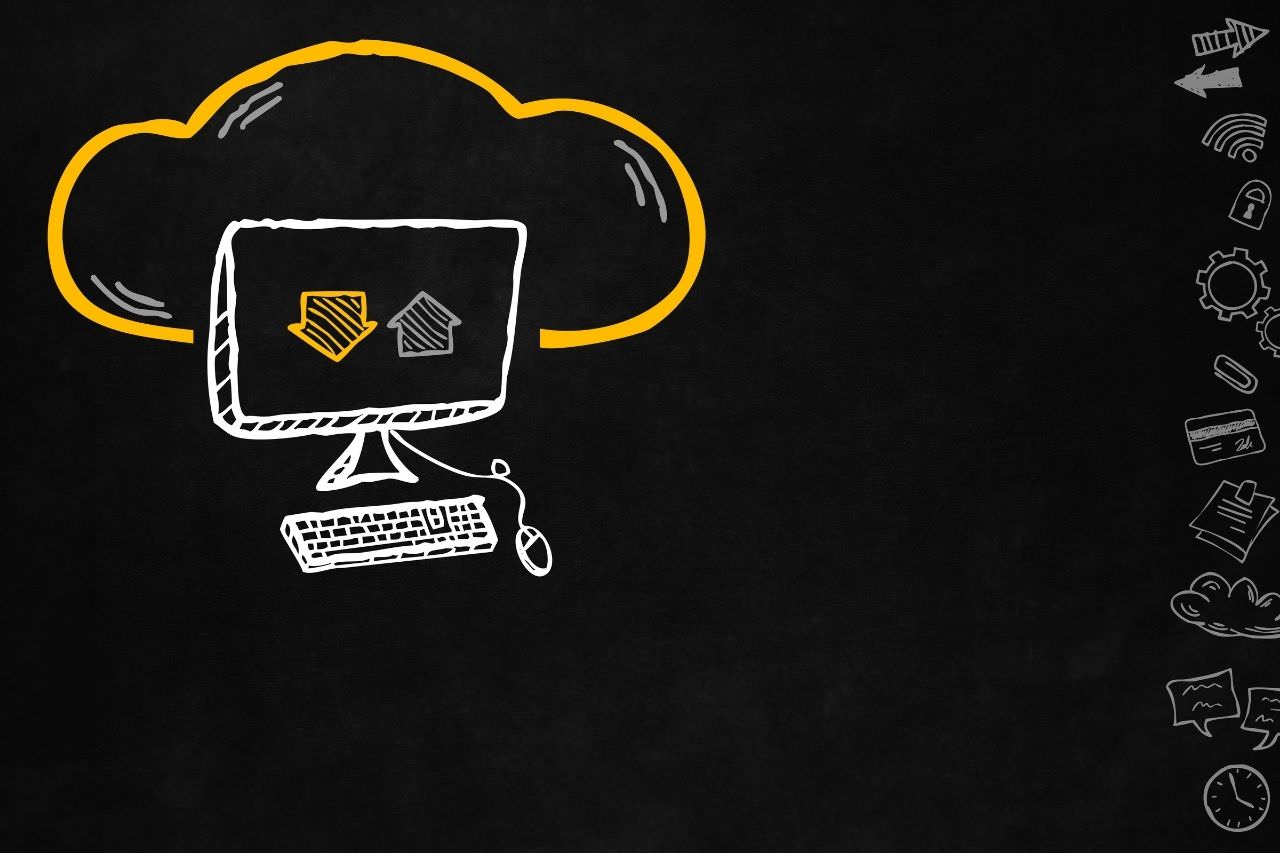The use of virtual machines to manage and provide virtual desktops refers to Virtual desktop infrastructure (VDI). It holds desktop environments on a central server and positions them to end-users on request.
How does VDI work?
Two types of VDI provide different benefits.
1. Persistent VDI
Persistent VDI allows users to connect to the same desktop every time. They can also customize the desktop according to their needs. Such actions are possible because the changes they make saves even after the connection resets. It is safe to say that in a persistent VDI environment, desktops behave just like a personal physical desktop.
2. Nonpersistent VDI
Users cannot save changes and only connects to generic desktops in Nonpersistent VDI. It is cheaper and more straightforward as users do not need to maintain personalized desktops between sessions. Huge organizations with numerous employees or task workers usually employ nonpersistent VDI performing a tight set of monotonous tasks. Such a group of workers also do not require a customized desktop.
The following features apply in all VDI deployments:
- On a centered server, the virtual desktops live within VMs.
- Like any Microsoft Windows, each virtual desktop comprises an operating system image.
- The host-based VMs can house numerous instances on the same server inside the data center.
- End clients can access virtualized desktops it hosts by always staying connected to the centrally controlled server.
- The VDI application’s link agent finds a virtual desktop inside the resource pond for each user to connect. It can operate such functions once it successfully accesses the VDI environment.
- A hypervisor runs, creates, and control the numerous VM host machines that envelop the individual virtual desktop environments.
In the current digital workspaces, various apps gain access on demand. VDI helps to assist in securing an easy remote permit that improves employee productivity. Besides, it allows a stable experience across various devices.
VDI vs. Digital Virtualization
Digital virtualization is a process that allows you to run a virtual machine on your desktop computer. Virtual desktop infrastructure (VDI), on the other hand, acts as a data center technology that gives hosted desktop images to remote users. The very definition of the two shows how different they are from each other.
Digital virtualization is a common term for any technology that divides a desktop domain from the hardware used to access it. VDI is a digital virtualization type; however, there are different ways to apply digital virtualization. Users can apply it as remote desktop services (RDS), which connect users to a shared desktop that runs on a remote server.
Unlike VDI, not all kinds of digital virtualization can hold host-based VMs. VDI is not similar to digital virtualization as a category. It is instead a second option to other forms of virtual desktop delivery. It comprises hosted shared solutions that link PCs and thin customers to shared desktops and local desktop virtualization. Under such circumstances, the desktop environment runs straight on the customer.
VDI in Digital Workspaces
Considering all assisting framework functions as intended, users who casually access VDI solutions from their endpoint can control the OS. Additionally, consider the data and applications on it were locally running. Such setup allows workers to safely access the works they require virtually from any device without needing specific hardware.
Virtual desktops can control and run parallel to a budding range of web, Cloud, and mobile apps essential to modern workflows. It increases the results for convenient, secure remote access and single sign-on (SSO). Employees experience a combined experience that allows a higher work rate. At the same time, IT avoids defending and reducing the possibility of unauthorized logins.
In the circumstances of a digital workspace platform, VDI donates to a higher working domain without compromising on security. It is dependent on a specific classification type to determine the exact ways VDI benefits IT and users.
Benefits of VDI
VDI helps increased user flexibility and remote access. Users can reach regulated desktop from almost any compatible and approved endpoint in any location. Workers who are continuously in need and on the go can draw up the virtual desktop. Such desktops comprise a full collection of virtual data and apps. VDI positions correctly into the digital workspace workflows that feature already similar daily consumption of web, Cloud, etc. In persistent VDI, the fitting in the company’s work progress also features mobile apps over numerous contexts.
It is essential to understand the benefits of VDI in different departments of use.
1. Cost savings and lower hardware requirements
Besides benefitting end-users, IT can also maintain a robust cost-saving measure with VDI technology.
- Most of the processing in VDI, which is relatively expensive, cutting-edge hardware, or server-based, is not necessary.
- Instead, VDI access can materialize from an economically thin client. It might be an old PC with a reusable task and therefore had its lifecycle increased.
- It saves the need to make as many crucial adjustments or additional purchases to the cost for IT.
2. Upgraded centralization and safety
On the safety front, VDI provides some advancement over managing everything on it locally and on OS. Every detail from a VDI link resides on the server and not on the end client. It means that if the endpoint is ever lost or stolen, there is nothing to pull out from its local storage.
Furthermore, the nature of VDI manages centrally and entirely from a data center. Administrators can alter configurations, enforce all virtual desktops’ policies, and put up software updates and patches across the deployment. In such a way, VDI permits refined security and controlled separation of OS images from a central server. The setup is less complicated that helps manage laptops run their OSes locally.
3. Considerations for performance and security
Users cannot take VDI security for granted. The end client confirmation must be diligent, and OS images have to be carefully updated and managed. SSO can help in digital workspace solutions by hiding data transit and improve endpoint security.
Execution is another primary consideration with VDI:
- In the mid-2000s, VDI became widely available. However, the model performance fell short of the local OS.
- With time such lagging closed significantly. However, users still feel they cannot enjoy the best possible experience.
- Periodic reviews and performance-tuning of VDI classification are best to make sure for addressing stable technical problems.

Drawbacks of VDI
Moving to VDI is not always smooth for some people. Most customers talk of some common roadblocks when making the shift to VDI, like:
- Execution difficulty
- Endpoint presentation
- Scalability
- Cost
1. Virtual desktop framework execution complexity
Its pros require changing almost every feature of their network to put up a virtual desktop infrastructure. It means enhancing special endpoint devices, robust servers, and building up networking gear. It also includes binding developments that go with the updates, cooling, and power.
You have to consider the issue of messing with your endpoint devices. It would require you to function backward through a wired/ wireless network to the servers, storage connected to it, and switches. Such conversion is essential and prying. It further needs specialized expertise for proper execution along the way, brings about fruitful outages for users, and a specific plan. In many instances, most organizations do not possess the technical resources on staff. It would mean that they require using costly, specialized guides for months or weeks to get evidence of concept together.
Furthermore, along with the technical difficulties, it is essential to survey the licensing needs for VDI solutions thoroughly. Today, VDI customers face complicated accord with numerous vendors because Microsoft does not help them. It spells a nightmare for IT pro, even if they leaving out the organization’s obtainment department.
2. Endpoint performance
Since computing power shifts from the endpoint to the data center, the end-user can weather execution issues. Depending on the network of the end-user, the VDI can either stop working entirely or poorly.
IT departments made it essential for end-users to accept and understand that it will not work unless they connect to a network. Usually, there is no functionality or “offline” mode. Meanwhile, performance and availability of bandwidth are both increasing. The probability of the kind of work that an end-user is doing may or may not work.
It may be acceptable for the typical office application and work. The decrease in productivity puts pressure on the VDI solution for work that requires graphic-intensive or high-compute performance. More than the end-users, it certainly benefits IT more by underlining the philosophical point of view with VDI.
3. Scalability
It is essential for the networking infrastructure and the server to step up accordingly to scale up the VDI solution. Users cannot rely on endpoint devices for any considerable quantification of performances. The bandwidth, storage, and RAM need to scale up to compensate. Increasing such components can be time-consuming and costly to execute. Mostly, it needs business-wide interruption and highly skilled experts to complete the work.
4. Cost
When you sit down to make the calculations, consider all the factors related to the project’s cost. The most obvious price to consider is hardware and software charges. It would help if you now thought about the value of testing, electricity, time for execution, building space, time for consultants, and more. What about understanding, evidence of the technology, and time for research? Who shall take charge of buying and securing down licensing questions? Who will confirm other third-party software vendors and your enterprise’s submission with Microsoft?
Balance virtual desktop infrastructure with an additional customary model where devices of end-users get less costly. Licensing is understandable, along with the practical skill to put up a custom endpoint device, is more readily available. Review business progression cost. Eventually, business flow is crucial for IT. The solution that runs most effectively and keeps the business up becomes the most critical concern.
There are many well-known approaches available to remedy VDI’s ups and downs. Such solutions can help to achieve better ways to lead smart endpoint devices. Reliable sources allow IT pros to keep the controllable profits they prefer in VDI; however, end-users experience local execution on the endpoint device. Further, using the prevalent hardware and skillsets in their territory, they can avoid executing the difficulty that VDI solutions need.
Reliable sources can provide clients the benefit of VDI beyond the cost, complexity, and scalability needs. Thorough research will help you find the best online solutions to all your VDI issues. Reviews and feedback come from customers and experts who have already experienced all the problems of the product. It is best to look upon such professional advice and suggestions to keep your business going and afloat.
Top virtual desktop infrastructure (VDI) software
Due to the utilization of similar applications and OS, VDI solutions enormously help decrease the support expense. Furthermore, the installation and management of a single OS lower the costs. The following collection is the best VDI software based on their reliability, performance, other measures, and market reach. The group also takes into consideration reviews and ratings of genuine users.
1. V2 Cloud
The V2 Cloud simplifies desktop virtualization as it is the best IT geek. It is the complete united Desktop-as-a-Service solution that focuses on simplicity and speed. Many users find it the best to work with, as it is fast and functions anywhere. You can do away with the worries of encountering multiple issues and utilize your cloud computer safely. It is economical and quick. No wonder the V2 Cloud is free and the most straightforward cloud desktop.
2. Amazon WorkSpaces

It is a secure and controlled cloud desktop service. Users can employ the Amazon WorkSpaces to equip either the Linux desktops or Windows. It works within a few minutes and swiftly scales to give thousands of desktops to employees all over the world.
3. Parallels RAS software
VDI and Remote Application Delivery can be costly and complicated. If you are using the Parallels RAS, it can remotely deliver desktops and applications to their employees.
4. Vagrant
Regardless of your role as a designer, developer, or operator, the HashiCorp Vagrant avails the same flexible workflow. It holds an indicative file layout that outlines all your software packages, users, etc. Other description includes operating system configuration, software requirements, and more.
5. Riverbed
The Digital Performance Company, Riverbed shares the common purpose of promoting human experience in the virtual world. Every human is responsible for the digital experience prevalent today. Riverbed allows organizations to estimate digital events. It also increases the execution of digital presentation to help convey more powerful and better human experiences.
6. Sangfor
The leading worldwide IT vendor for infrastructure solutions is Sangfor Technologies. It devotes to Network Security & Optimization and Cloud Computing. The products include but not limited to:
- SSL &IPSec VPN
- Hyper-Converged Infrastructure
- WAN Optimization
- Virtual Desktop Infrastructure
- Internet Access Management
- Next-Generation Application Firewall
7. Xen Hypervisor
It is a bare-metal hypervisor or an open-source type-1. Many occurrences can run on any operating system or numerous operating systems simultaneously on a single machine (or host). The only type-1 hypervisor that is accessible as open-source is Xen. Several various open-source and commercial application uses Xen as its premise. Such applications include:
- Infrastructure as a Service (IaaS)
- Security applications
- Server virtualization
- Desktop virtualization
- Embedded and hardware appliances
Xen allows users to decrease the full cost of ownership, maximize server use, cut down the difficulty, and unite server farms.
8. Ace Cloud Hosting VDI
It provides both DaaS Solutions and Hosted Virtual Desktops for all industries. It completely controls service functionality with 30-day Free Data Back up and 99.999% uptime. Users can also expect all-time online VDI consultants, no IT issues, and business progression with high-level security. According to business requirements, the Ace Cloud Hosting VDI can customize cost-effective cloud desktops. Many users favor it as it is accessible anytime and anywhere from their devices.
9. VMware Horizon Cloud
It is one of the best software that goes beyond VDI. It avails end-users with a single place to enter all their online services, desktops, and applications securely. Such access is possible for users from anywhere, anytime, and on any device. Organizations can take advantage of the various features of VMware Horizon Cloud include:
- Close combination with the software-defined data center
- Automation and tight-loop regulation
10. Red Hat Virtualization
It is an open, software-defined platform that virtualizes Microsoft Windows and Linux workloads. It is a Kernel-based Virtual Machine (KVM) and set up on Red Hat Enterprise Linux. Its features include controlled tools that virtualize applications, resources, and processes. It gives users a packed future and firm footing for a cloud-native.
11. Nutanix
It increases IT to center on the services and applications that strengthen their business. It makes infrastructure invisible. The software undertakes consumer-grade design to meet calculations locally, and the cloud platform boosts web-scale engineering.
12. Xen Project
It is home to numerous virtualization-related open source projects. The community of Xen project centers on furthering virtualization in various open-source and commercial applications. Such advancement also includes server virtualization.






